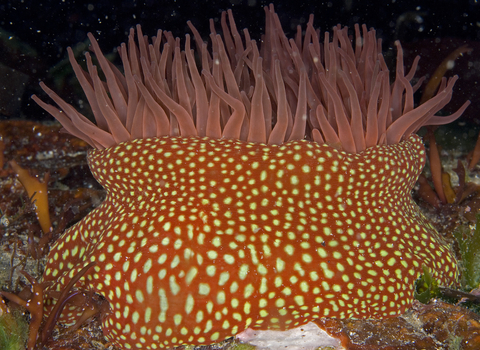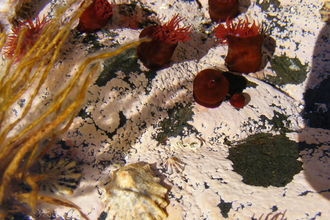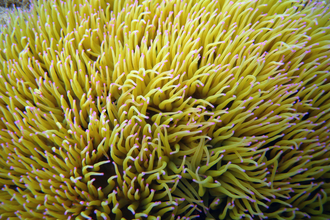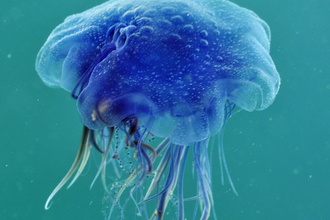
Strawberry Anemone ©Paul Naylor
Strawberry anemone
This large anemone is found on rocky shores around the UK and is so called because its green spots and red body means it looks like a strawberry!
Scientific name
Actinia fragaceaWhen to see
January to DecemberSpecies information
Category
Statistics
Diameter: 10cmConservation status
Common





